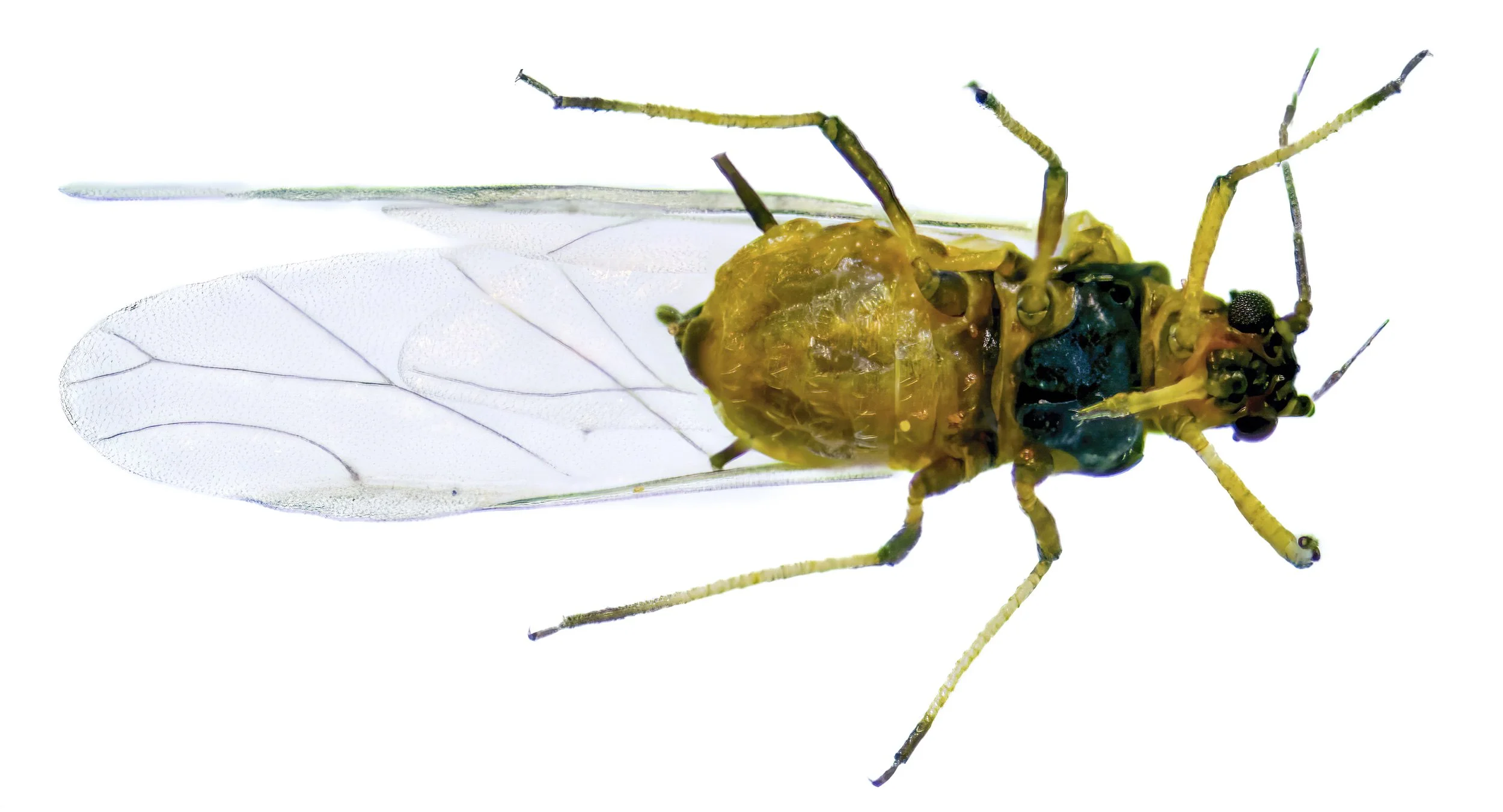Aphis sp. **
©entophotography
Entomological Photography
This site describes the tools and techniques for creating high quality insect photographs. The purpose of the site is to help make these skills more widely known, to support the work of citizen scientists.
Entomological photography, that is taking photographs with a scientific purpose, is somewhat different from other forms of photography. The objectives are not exactly the same.
If you are taking photographs to enter a competition for example, you are looking for a photograph with a “WOW factor”, or maybe a photograph that tells a little story. You are interested in the aesthetics of the shot - for example, how the colours combine and how the bokeh looks in the final image. You may not want all the subject in focus - just the bits you want to highlight or emphasise. You may be happy to have areas of shadow or blur for dramatic effect.
As an entomologist, you are setting out to get something slightly different. You are looking to create a scientific record - maybe to capture all the details of an insect to enable identification. You are aiming to show the whole of the insect in focus, or alternatively, you are aiming to get several shots that, in turn, highlight the parts of the insect that are important for identification or other scientific purpose. You may be interested in capturing features such as cornicles or cerci, wing venation or tarsal structures that are particularly important for identification. You may also be interested in getting shots that portray the insect in its ecological niche or interacting with its environment in some way. Your emphasis is on detail photography that captures those things with as much resolution and focus as possible. You avoid shadows and blurriness in the image.
If you get a competition-ready photograph in the process, that’s great. It isn’t the primary objective, but it is possible to achieve both! (See the photo below by David Kemp).
The website aims to describe the methods that will enable great photos of insects, to a standard whereby identification is more likely. It is to showcase the techniques for taking photos that better present the important identification features. We want to make it more possible to photograph insects in their environment to illustrate some feature of their everyday life and behaviours.
The sections of this website will take you through the process of finding the right equipment, taking the photos in the field or in the studio, and processing the photos to achieve the desired result. The description of the methods will include the equipment, techniques and the post-process software that will yield the best insect photographs. We will describe the process of “focus-stacking” which is an essential part of getting the highest quality macro images. (Focus-stacking means to combine a series of photographs into one image, where each of the shots covers a different plane of focus in the subject). We will cover the post-process software for enhancing the quality of the image.
We are going to assume that the reader has some basic understanding of photographic terms, so we won’t define every single term used as we go. However, the “Other Resources” section does include more detailed descriptions of things that might need more explaining. This is to keep things as clear as possible and to avoid getting the reader bogged down in lots of definitions of basic things, that she or he may already understand. If we are assuming too much, please lets us know and we can make some changes.
A big “thank you” to all those who kindly gave permission for us to use their great photos on this site - it is much appreciated!
We welcome feedback, particularly if you think we have anything wrong on this site or if we should be covering a topic area that has been missed! It is still a work in progress.
© David Kemp
Example of what can be achieved - a superb image of an ant’s head by top photographer David Kemp. This image shows the sclerites on the head as well as details of the mandibles, that make it potentially suitable for a scientific record. And on this occasion David achieved a competition-standard shot as well!
**For more information on the aphid photograph used on this home page, see the Gallery section:


